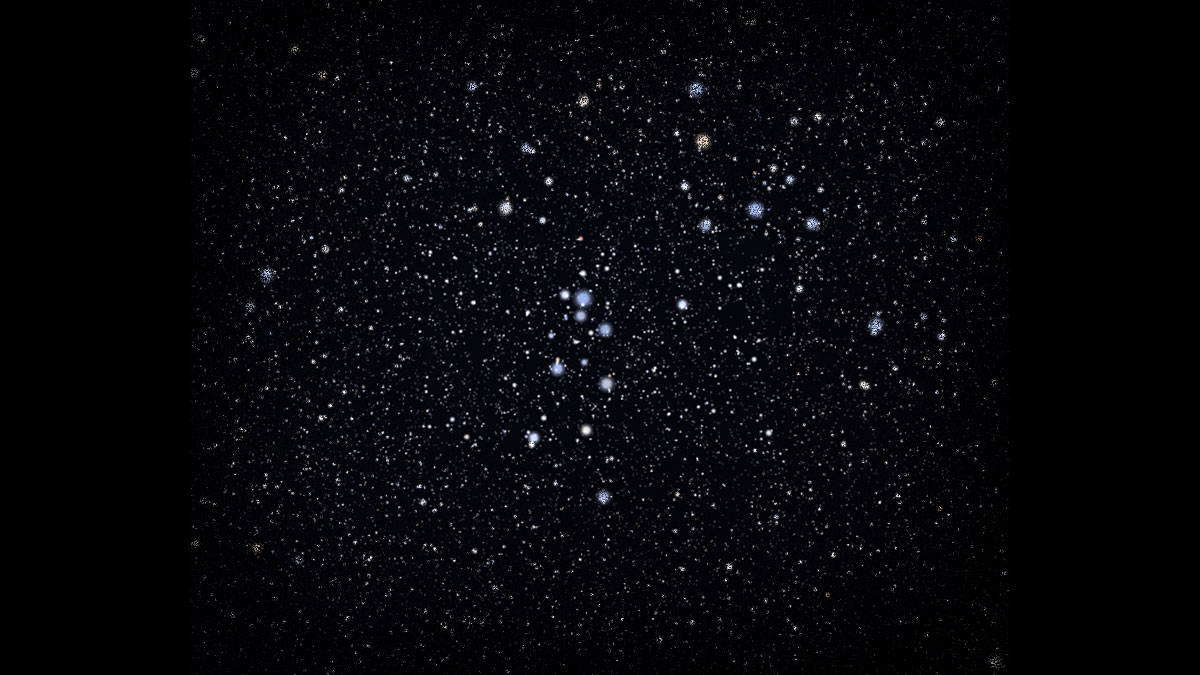In the faint winter constellation of Monoceros lies NGC 2232. At a distance of 1,060 light years away, NGC 2232 is one of the closest open star clusters to earth. Only around 14 clusters are closer, including the famous Pleiades, Hyades, and Beehive clusters.
NGC 2232’s apparent size is 53 arcminutes. For comparison, the full moon is 31 arcminutes in diameter. This means NGC 2232 is almost twice the size of the moon in the sky. Based on the cluster’s distance and apparent size, astronomers have figured NGC 2232 to have a physical diameter of 18 light years.
On another interesting note, the cluster is a part of a partial ring of stars in the Milky Way called the Gould Belt. Essentially, this belt is a strip of star-forming regions not in the plane of the galaxy. Instead, this strip weaves above and below the Milky Way galaxy as shown here. This begs the question: What caused this strip of stars to form this way? Read “Did dark matter form the Gould Belt?” by Graham Doskochon to gain a better understanding of this mysterious road of stars in our galaxy.
My Observations
| Date | February 12, 2022 |
| Time | 8:15 p.m. |
| Location | Seattle, WA |
| Magnification | 102x |
| Scope | Meade 8″ SCT |
| Eyepiece | 20mm |
| Seeing | Below Average |
| Transparency | Average |

Viewing conditions are not the best as the moon is nearly full tonight. After failing to find a dim cluster in Gemini, I’ve decided to turn the scope toward Monoceros to try my luck on NGC 2232.
I’m glad I didn’t let the bright moon dissuade my efforts! NGC 2232 is bright and big enough to view on a night like this, and I’m enjoying viewing this cluster. A sharp blue-white star burns prominently among the patch of dimmer and various-sized stars.
Follow-up research: The blue-white star I noted on February 12, 2022, is 10 Monocerotis. Jim Kaler points out that 10 Monocerotis may simply be an unrelated star sitting in front on the other stars. However, as he continues to explain, there are various coincidences between 10 Mon and other stars in the cluster so 10 Mon might indeed belong in the NGC 2232 family.
Key Stats
| Constellation | Monoceros |
| Best Viewing | Winter |
| Visual Magnitude | +4.2 |
| Absolute Magnitude | -3.6 |
| Distance from Earth | 1,060 ly |
| Diameter | 18 ly |
| Apparent Size | 53 arcmin |
| Milky Way Location | Orion Spur |
| My Viewing Grade | A- |
Sources and Notes
Banner photo by Roberto Mura and taken from and taken from Stellarium. Image licensed under the Creative Commons Attribution-Share Alike 3.0 Unported license.
